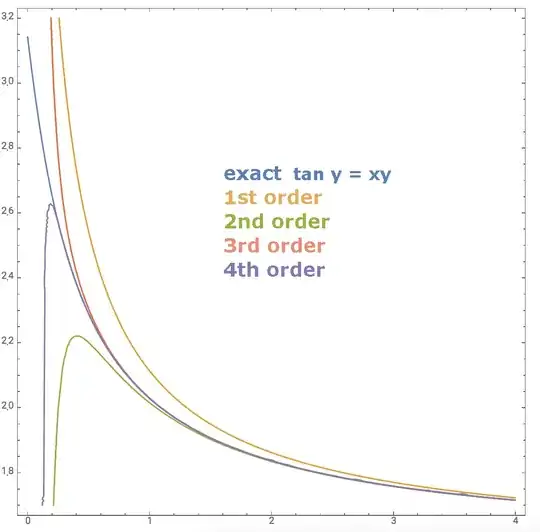$$tan(x)=-\lambda x$$
$$\frac{tan(x)}{x}=-\lambda,\ \ x\neq 0$$
1.)
To solve this equation, you could use the partial inverses (= the branches of the inverse relation) of the elementary function $x\mapsto \frac{tan(x)}{x}$. It follows with Ritt's theorem on elementary inverse functions (1925) that the function doesn't have elementary partial inverses if its domain contains an open set. That means, it is not possible to solve the equation by only applying only elementary inverse operations of the elementary operations contained in the equation terms.
2.)
See this reference: Kheyfits, A. I.: Explicit solutions of transcendental equations and the Lambert W function. The author writes: "The method can be also applied to many other equations, like
... $w\ \tan w=z$ ..."
Apply this method to $\frac{tan(x)}{x}$, if this is possible.
Or use Lagrange inversion.
3.)
Let $T$ denote the inverse of the function $x\mapsto \frac{tan(x)}{x}$. Applying this to your equation above yields the solution $x=T(-\lambda)$.
4.)
For a given $\lambda$, you can use $\tan(x)+\lambda x=0$. The Taylor series of the function $x\mapsto \tan(x)+\lambda x$ is more simple than that of the function $x\mapsto \frac{\tan(x)}{x}$, and therefore its Lagrange inversion.
5.)
There is no elementary solution that you can read only from the equation. If you use a Special function or a series representation, e.g. a Taylor series, you have to calculate single values. The simplest way is therefore to calculate single values without using a formula for the partial inverses. Calculate a table of values of $x$ and $\frac{\tan(x)}{x}$ and invert this function. And apply the partial inverse functions to your $-\lambda$ as above.
6.)
Wolfram Alpha gives some numerical solutions. See e.g. here.
 $$ y(x) = \frac{\pi}{2}\sqrt{u(c\left(\frac{8}{x\pi^2}\right))} $$ to order
$$ y(x) = \frac{\pi}{2}\sqrt{u(c\left(\frac{8}{x\pi^2}\right))} $$ to order